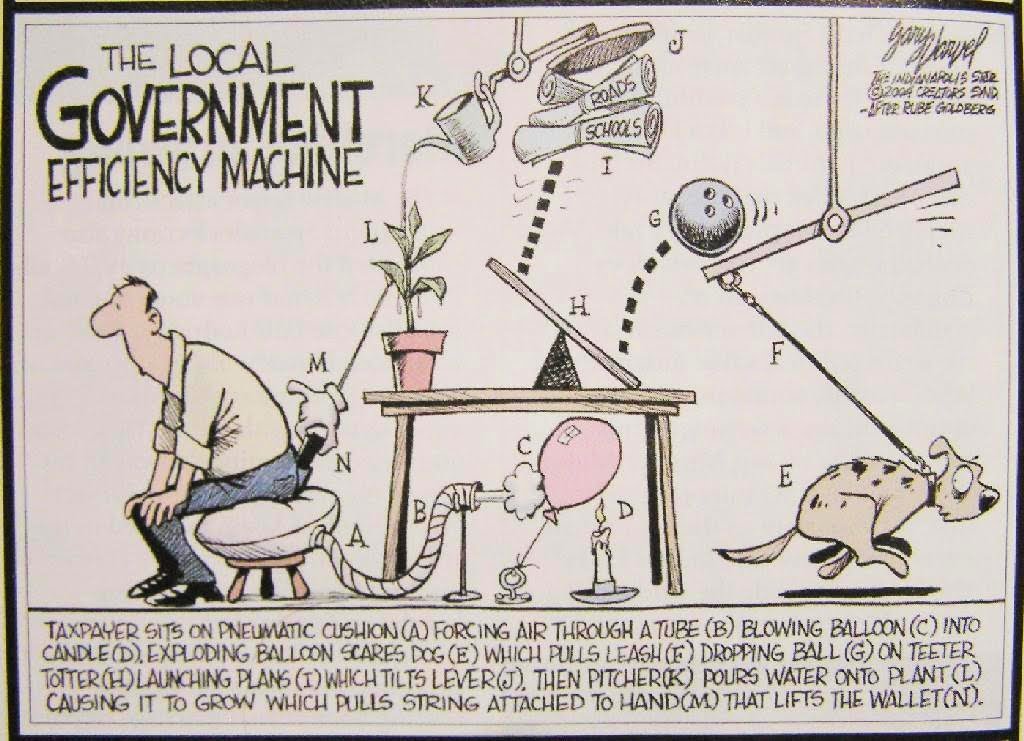Single Member District with Plurality (SMDP or SMP) electoral law, the fifth majoritarian feature
A majoritarian system will use an electoral law called Single Member District with Plurality (SMDP or SMP) for its elections to the legislature. In a system using SMDP, the state is divided into a number of electoral districts (variously called districts, constituencies, ridings) equal to the number of legislative seats to be filled. In Great Britain, which uses the majoritarian SMDP law, there are 646 seats in the House of Commons, and so there are 646 constituencies. On election day, voters vote in their constituency, choosing one candidate from those offered by the various parties (each party nominates just one candidate). The candidate who wins the most number of votes (plurality) wins the seat, which is why the system is commonly called "first past the post" (in a horse race the first horse at the finishing line gets the roses). Candidates who get fewer votes get nothing.
There is a bewildering number of nonmajoritarian alternatives to SMDP. Let's consider just one, a simple but clearly different one. Israel uses Proportional Representation (PR) with national list. The entire state of Israel is one electoral district, with all voters deciding together how to fill the 120 seats in the Knesseth, Israel's national parliament. On election day, voters go to the polls and are confronted by a ballot that does not list candidates, but rather the names of parties. Behind the each party name, there is a list of up to 120 candidates the party is offering for election. The voter has one vote and she casts this vote for whichever party she prefers. At the end of the day, the electoral board counts up the number of votes won by each party and figures the percentage of the total votes won by each party. Each party is awarded a percentage of the 120 seats that equals the percentage of the vote won by the party. So, seats are in the same proportion as the votes. Assume three parties: A wins 60% of the vote, B 30%, and C 10%; party A would get 72 seats (.6 x 120 = 72), B would get 36 (.3 x 120 = 36); and C would get 12 seats (.1 x 120 = 12). (To answer the obvious question, the candidates are ranked by the party in positions 1 through 120, with the party leader as #1, the deputy party leader as #2, and so on; individuals on the list get to the Knesseth as long as the party is still due seats to give them a proportional result.).
While unicameralism, fusion of legislative and executive power, parliamentary sovereignty, and unitary government have pretty obvious effects on the way government operates, the significance of electoral law is a little less clear. To understand the effects of electoral law, you have to follow a line of argument, as follows:
- In SMDP, unless you as a party stand a chance of getting a plurality and so winning a seat, there is no payoff from running a candidate (and voters who ordinarily like your party know this)
- If your party gets nothing from running a candidate who gets nothing because he doesn't stand a chance of coming in first, don't run a candidate
- If parties don't run candidates who don't stand a chance of winning, there will be fewer political parties running candidates at all
- The result is likely to be a two-party system with one party winning an absolute majority (defined as 50% plus one)
On other hand
- In PR you as a party don't need to win a plurality of votes or any fixed percentage; rather you get a payoff, a proportion of the seats, based on the share of the vote total you win (while you want to get as many votes as possible, even winning 5% of the vote will get you 5% of the seats in the legislature)
- Because there is a proportional payoff from competing, there is an incentive for more and more parties to run candidates for office
- The result is likely to be a multiparty system
- And because there are many more parties competing, the vote is likely to be fragmented with no party winning an absolute majority
As noted, Britain uses SMDP and, so, one would expect a two-party system there. Alas, reality doesn't always accord with theory. In the British elections of 2005, twelve parties won at least one seat, but five of the twelve parties are "national" parties in Scotland, Wales, and Northern Ireland. The theory still works pretty well, because for more than 80 years only three parties continually won a substantial number of seats, and this was the case in 2005 as well. Labour won 356 seats, the Conservatives 198, and the Liberal Democrats 62. (Note that Labour won an absolute majority of seats and so controlled the House of Commons, making their party leader, Tony Blair, prime minister.) These three parties control 95% of the seats in the House of Commons. Since World War II, Britain has been a two-and-a-half party system if not a two-party system. The US also uses SMDP which discourages multiple parties. In the 435-member House, there are 257 Democrats and 178 Republicans. There are currently 57 Democrats in the Senate, 41 Republicans, and two independents, but those independents are somewhat special cases: one, Joseph Lieberman of Connecticut, would still be firmly lodged in the Democratic Party if he had not been defeated in the Democratic primary only to come back having won as an independent candidate in the general election; and one independent, Bernie Sanders of Vermont who started politics from a socialist perspective but who operates as a Democrat. SMDP works like a charm in the US to hold down the number of political parties.
In Israel, however, there is PR and so we expect more political parties. In the 2005 Israeli elections, 31 parties ran candidates and twelve parties won seats. There, however, the distribution of seats was much more fragmented. The biggest winner, Kadima, won 29% of the seats. Taken together, the two top parties won less than 50% of the vote. Lacking an absolute majority of seats, a government could be formed only if three or more parties agreed to work together in a government coalition.
And this is the bottom line importance of electoral law: SMDP systems have fewer political parties and so it is more likely that one party will win a one-party majority forming the Government of the Day on its own. With PR, because there is a payoff for parties to compete, more parties do compete, more parties win seats in the legislature, thus reducing the likelihood that any one party will have an absolute majority; as a result, coalition governments are more likely to be required in systems that use PR.
Note: Though Britain uses SMDP, the 6 May 2010 general election turned out differently than one would normally expect. You should check out those election results and what happened afterward to form a government.
To recap, a majoritarian form of government includes unicameralism and a fusion of legislative and executive power and parliamentary sovereignty and a unitary government and a single member district with plurality electoral law.
With these five features, we can go back to the general discussion of constitutional arrangements and look at the big picture...
|


